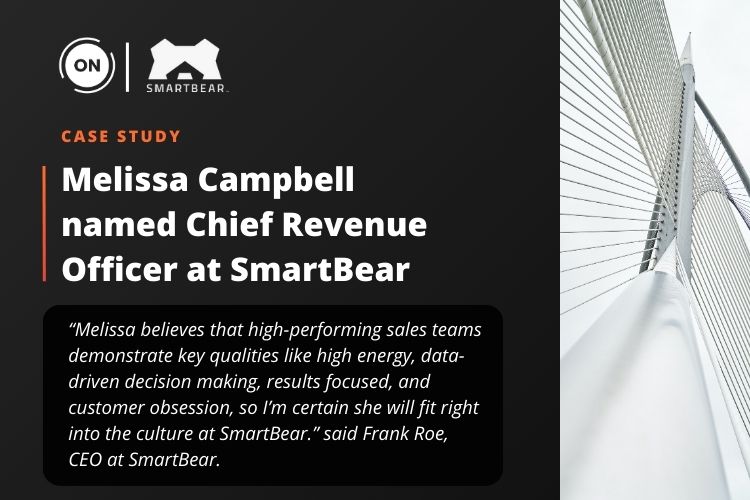ON Partners is proud to have collaborated with SmartBear in finding the organization’s Chief Revenue Officer.



Featured in Fortune written by Anne Fisher– April 10, 2020 — About 90% of us, for example, have had a family member or a pet wander in during a work-related video chat, according to a survey by HR software firm O.C. Tanner. That’s not necessarily a bad thing, since it seems that a glimpse of each other’s personal lives can help people stay connected and productive in these harrowing times.
One big exception: Video job interviews, where professionalism and attention to detail are table stakes. “People are getting very sloppy,” observes Paul Bailo, PhD, a digital strategy expert who teaches management and innovation at Columbia University and wrote a new book called The Essential Digital Interview Handbook.
His data shows that “about 85% of a successful video interview comes down to how you look, and how you set up your surroundings,” he says. “These days, lots of people just aren’t bothering to put their best foot forward.” In his research, Bailo encountered one interviewee who wore a boa constrictor around his neck. Another sat with “an open closet with a big mess of clothes and shoes spilling out of it in the background,” Bailo recalls.
Admittedly, those are extreme examples. Even so, recruiters report that, with everyone now so much more relaxed on camera than before, most video interviewers are seeing a sharp increase in missteps. Before the coronavirus crisis, “about one in five video interviews we conducted had some element that was annoying or distracting,” says Marc Gasperino, managing director of the digital practice at headhunters ON Partners. “Now it’s much, much worse.”
Since “any little thing that’s irritating could cost you the job,” he adds, “it’s essential to take the time to shift gears from working from home to interviewing from home.”
Contributions to the Fortune article from Marc Gasperino, partner at ON Partners:
A further thought from Marc Gasperino: In a video interview, even more than in person, keep your answers brief and to the point, unless your interlocutor specifically requests more detail. “It’s harder to build a personal connection onscreen than face-to-face,” he says. “So you can easily miss those subtle nonverbal cues that someone is bored or wants to move on to the next question.
“The Number One reason people don’t get hired,” he adds, “is that they bombard the interviewer with too much information that no one asked for.” A much better approach: “Give a general overview of your career so far, and of particular accomplishments, but pause often to ask whether or not the interviewer would like more detail.” If not, stop talking.
Gasperino’s rule of thumb for how to tell whether you’re rambling: “If you think that you might be speaking too much, you are.” Got it.
To read the full article, visit Fortune here.
Want more tips and tools for video interviewing? See our video interviewing guide here.
ON Partners propels an organization’s mission by building C-level and board leadership teams. Founded in 2006 by like-minded consultants as a values-driven alternative to the multi-service global firms they were leaving behind, ON delivers a better executive search experience. The firm has been named to the Inc. 500/5000 Lists six times, was named to the Inc. 5000 Hall of Fame in 2018 and is consistently ranked among the top 20 retained executive search firms in the U.S. See our recent placements here.
Follow our work, updates and recent success on Twitter and Linked In.
Since 2006, ON Partners is the only pure-play executive search firm building diverse C-level and board leadership teams. We rebuilt the institution of executive search for the way you work. Our approach includes present partners who engage with their clients from the first brief to the final decision, individually crafted solutions that are unique to each client, and an easier experience all around. Named by Forbes as one of America’s Best Executive Recruiting Firms and to the Inc. 500/5000 Lists nine times, ON Partners is consistently ranked among the top 20 retained executive search firms in the U.S.
Untraditional by Choice. Original by Design. Since 2006.
If you want to create a new path – ON Partners knows how to help you get there.